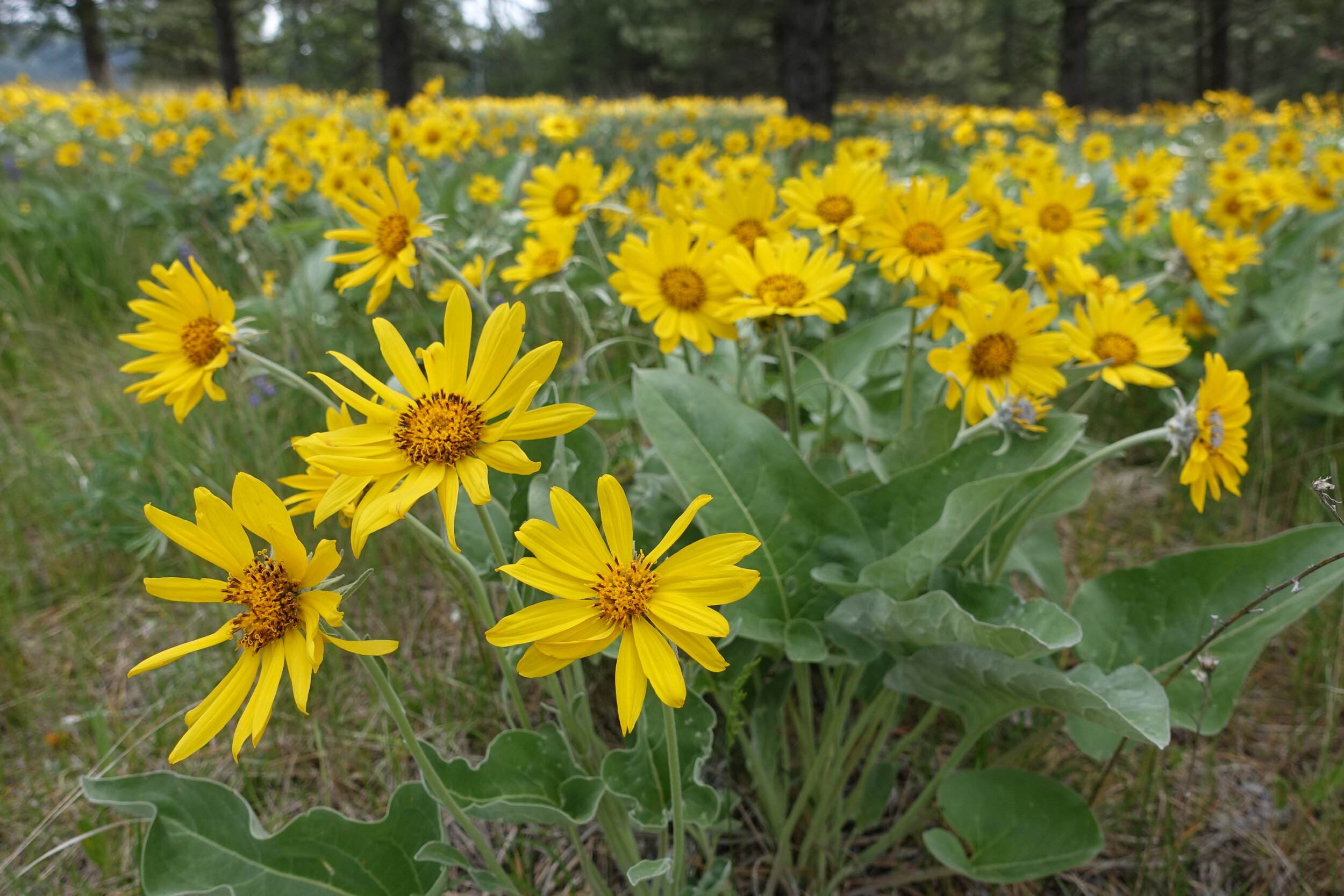
Natural History of Rattlesnake Creek
The Rattlesnake Creek Watershed is a remarkable place…
…especially for being so close to a large urban Montana population. There’s a lot to see and experience here. Elevations in the watershed range from 8,620 ft at the summit of McLeod Peak to about 3,200 ft in Missoula, where Rattlesnake Creek enters the Clark Fork River after a 26-mile run from the headwaters.
The present-day landscape has been shaped and affected in the last 15,000 years by water, ice, fire, and humans. Much of what wasn’t submerged under Glacial Lake Missoula (the upper shoreline of which reached 4,200 feet of elevation) was underneath glacial ice until about 10,000 years ago.
Several smaller cirque glaciers sat on the flanks of McLeod, Mosquito, and Stuart peaks and fed into the main Rattlesnake Creek Glacier, the terminal moraine of which is crossed at 3,800 feet of elevation on the main trail following Rattlesnake Creek, about three miles from the recreation and wilderness area trailhead. The cirques that once held glacial ice now hold more than 30 lakes and tarns.
The vascular flora of the watershed is marvelously diverse…
…and includes at least six species of native orchids, and a huge, colorful array of other native wildflowers. Glacier lilies, yellowbells, shooting stars, woodland stars, trillium, queen’s cup, and monkeyflowers are among the panoply of the delicate, yet robust understory. The watershed is also home to some fascinating, non-photosynthesizing plants, like pinedrops, that are fed by the mycorrhizal fungi that live beneath the decomposing carpet of forest litter.
The most visible of the flora are the trees and shrubs, which include whitebark pine and subalpine fir at higher elevations, lodgepole pine at mid- and higher elevations, Engelmann spruce and grand fir along creeks, streams, and moist sites, and Rocky Mountain juniper, ponderosa pine, western larch, and Douglas-fir at mid- and lower elevations. Broadleaf trees such as alder, aspen, mountain ash, and black cottonwood also occur in riparian and moist sites.
Shrubs and other ground cover include western yew, common juniper, ninebark, false azalea, red-osier dogwood, snowberry, Wood’s rose, serviceberry, chokecherry, elderberry, thimbleberry, kinninnick, Oregon grape, beargrass, and several species of huckleberry.
And the fauna of the watershed are supported by the outstanding floral diversity.
Most of the watershed’s fauna are invertebrates. Among many groups, the aquatic insects are probably the best studied as indicators of stream health, and a dietary component for aquatic and semiaquatic vertebrates present in the watershed, such as bull trout, westslope cutthroat trout, Rocky Mountain tailed frog, American Dipper, and western water shrew.
Terrestrial invertebrates are abundant - including adult forms of the various biting flies - with representatives of most groups present in Montana, even rare native mollusks such as magnum mantle-slug, lyre mantle-slug, and smoky taildropper, and unusual insects such as northern rock crawler and two species of snow scorpionfly.
Among the vertebrates occupying the watershed seasonally or year-round are eight species of fishes (all but the slimy sculpin are members of the trout family), five species of amphibians including Columbia spotted frog, western toad, and long-toed salamander, eight species of reptiles including western skink, northern alligator lizard, and northern rubber boa.
You could find at least 160 species of birds including bald eagle, great-horned owl, belted kingfisher, pileated woodpecker, and possibly still harlequin duck, as well as Clark’s nutcracker, Pacific wren, Cassin’s vireo, and white-crowned sparrow.
At least sixty species of mammals call the Rattlesnake Creek Watershed their home - from grizzly bear, mountain lion, gray wolf, wolverine, elk, mountain goat, and beaver on the larger end of the spectrum, to bobcat, northern river otter, red fox, and hoary marmot in the mid-sized group, to silver-haired bat, vagrant shrew, long-tailed weasel, American pika, red squirrel, and northern bog-lemming on the smaller end.